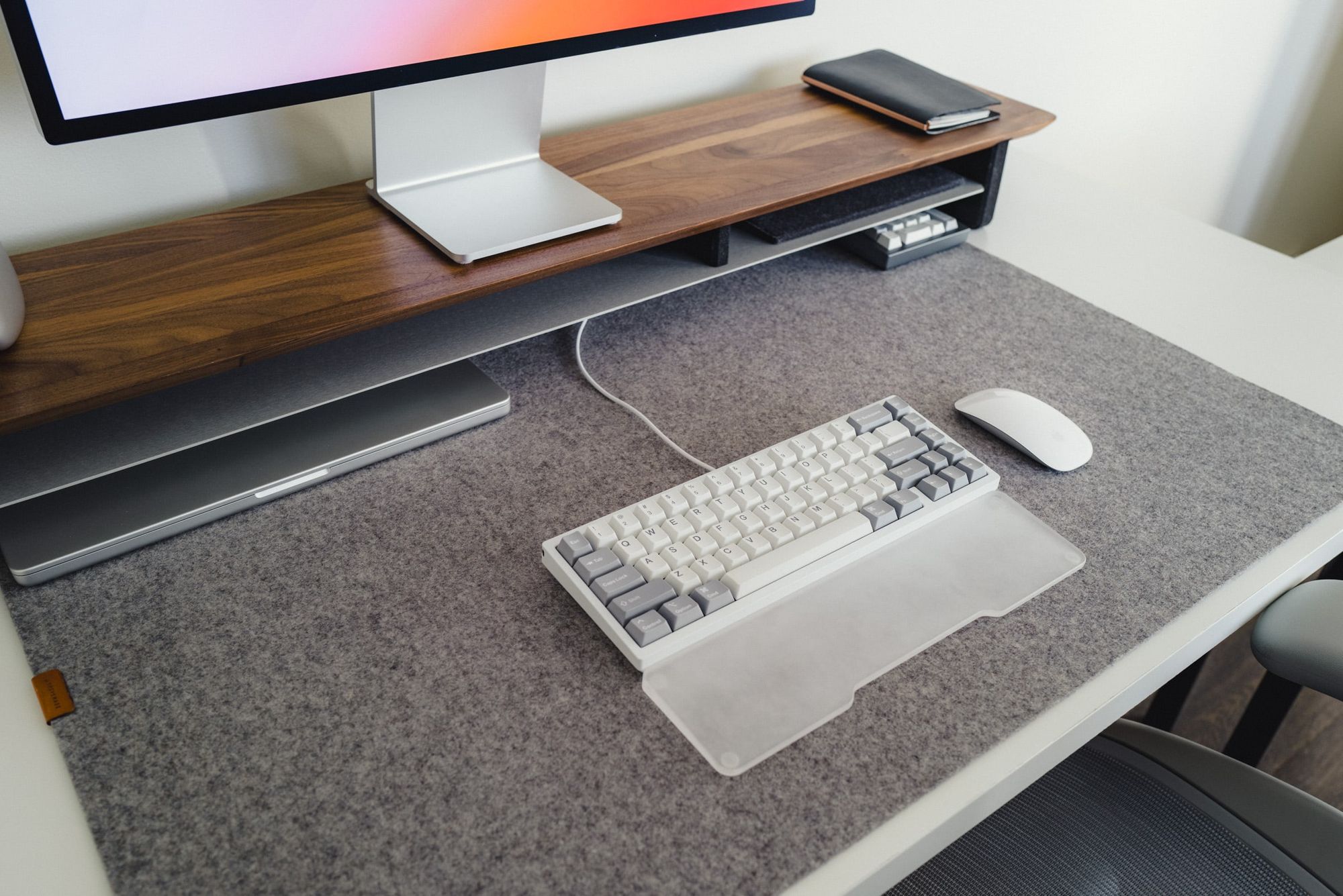
I don’t think you can “review” a mechanical keyboard, per se. They’re too much a sum of their parts. They’re too customizable. There’s so much you can do to make a board great. Or terrible. A great board build could be ruined by bad switches or poor keycaps. A poor build could be covered up by great keycaps or a few neat Bluetooth features.
Said another way, the Mode Envoy in my hands may be reviewed differently by other folks.
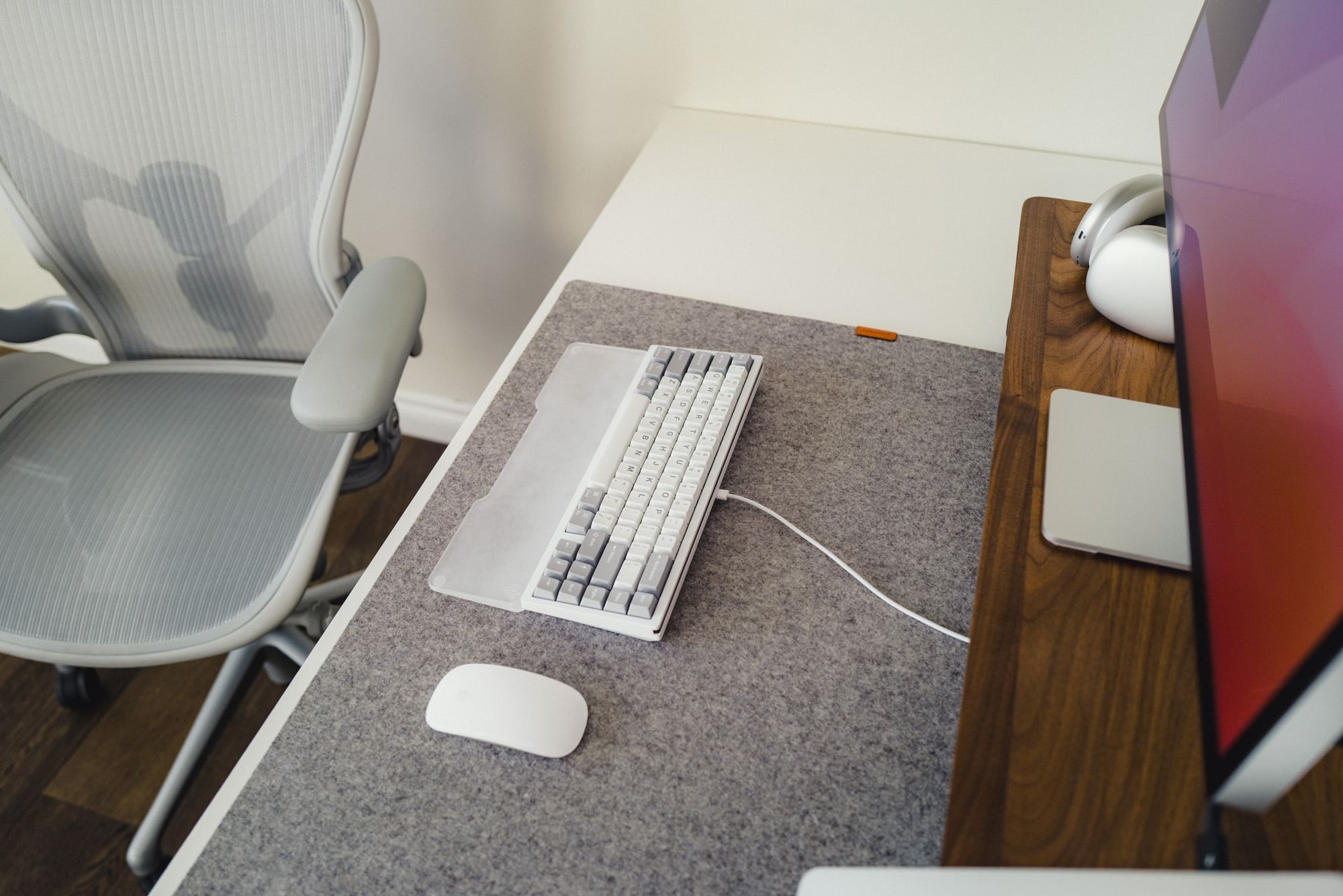
I purchased a limited run, prebuilt Mode Envoy a couple months ago. The prebuilt Envoys come with Mode Anthracite Keycaps, Anthracite Silent Tactile Switches, the now-famous Lattice Block Mount system, and more. Normally the Envoy is a custom keyboard that needs to be built by the buyer. This limited run screamed my name, if only because of a poor confidence level when it comes to building.
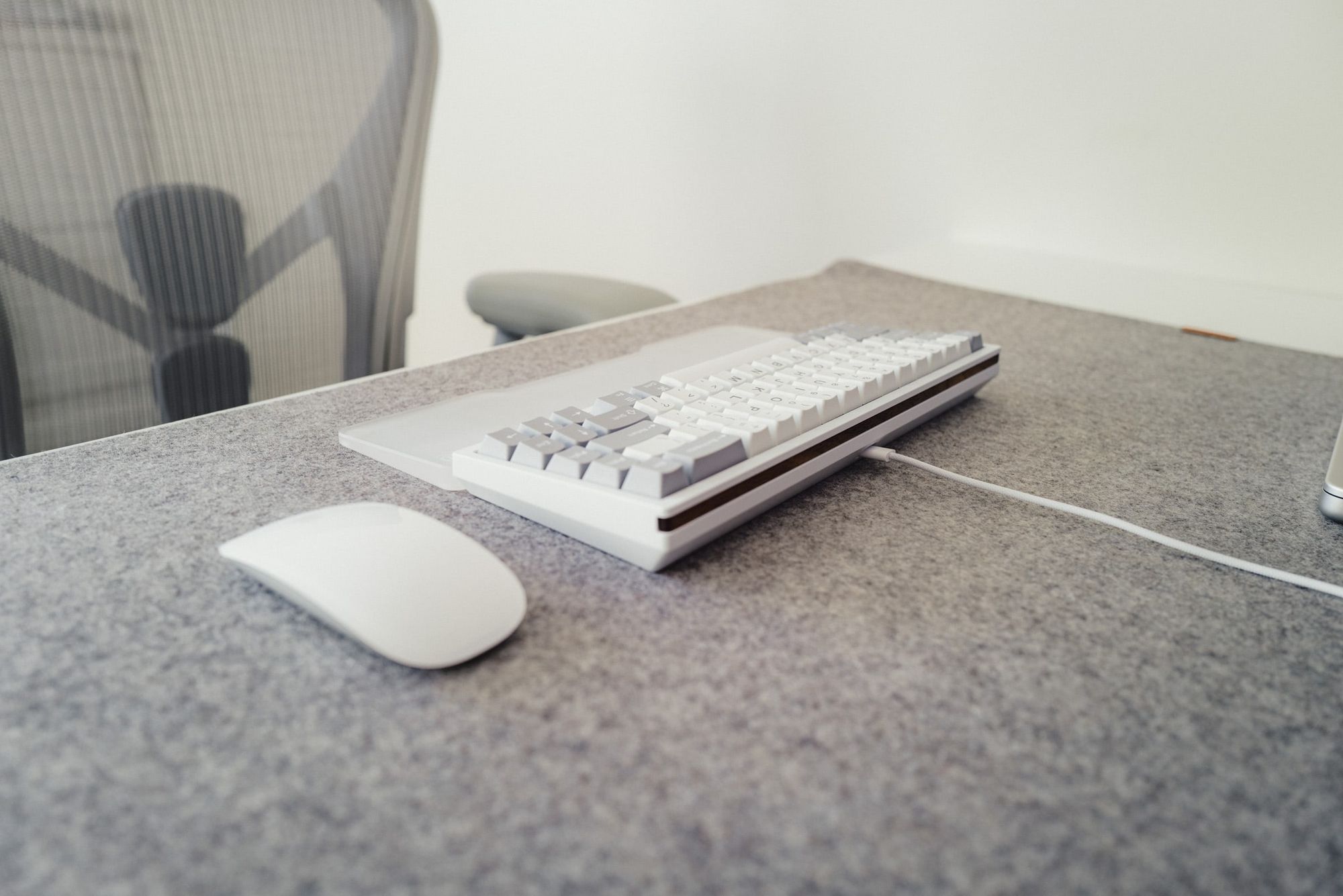
So despite being a sum of its underlying parts, the Mode Envoy indeed rises to a new level of fit and finish in my collection. The Envoy has a feel that has declared my keyboarding days in two different eras: the pre-Envoy era and the post-Envoy era.
The Chassis
The white e-coated aluminum chassis is sturdy. So sturdy. Like, “I thought plastic was just fine until I tried a Mode Envoy” sturdy. The chassis is likely the part that sets the Envoy apart from other semi-expensive prebuilt keyboards out there. This chassis feels formidable.
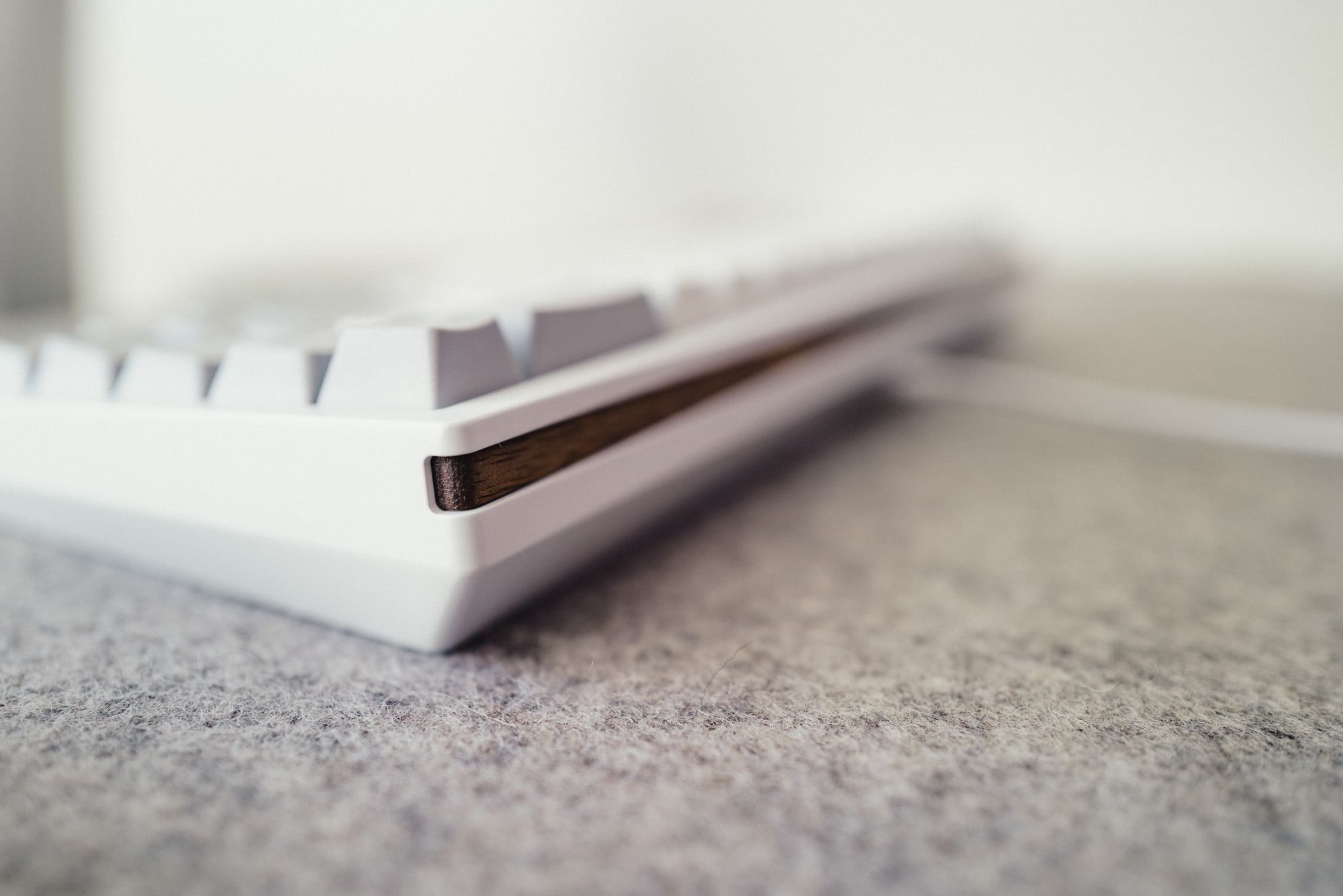
The chassis has two specific channels for added customization: the weight channel in the bottom of the chassis, which you have to remove the entire PCB to change out; and the accent channel on the top of the chassis, which you’d customize to your own accent choice. I removed the PCB and removed the pre-built aluminum accent the Envoy came with and added the walnut accent. The walnut accent fits all my other desk accessories nicely.
This prebuilt model has a simple grey anodized aluminum weight, which isn’t on the heaviest end of the spectrum by any means. If you want this keyboard to feel even more sturdy, you can upgrade to a copper weight. If you added a copper accent, you’d add additional weight to the board as well.
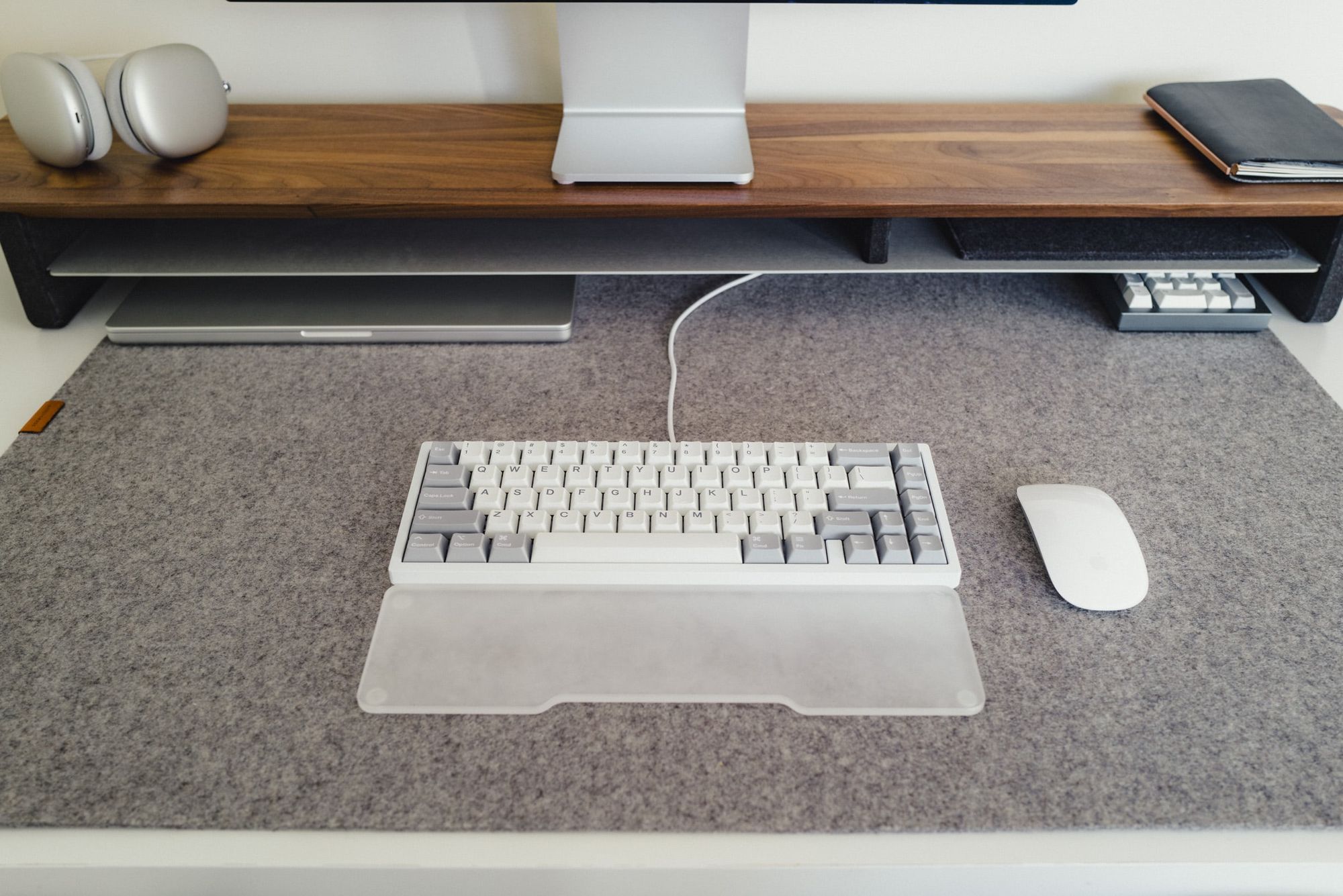
I focus specifically here on the heft of the keyboard because it is the fundamental feature to this keyboard. This sturdiness makes the keyboard feel so true when typing. The Envoy isn’t going to slip or slide around the desk. I can’t budge it.
I felt the Nuphy Halo96 was a hefty keyboard. But the fact this 65% Envoy has more weight and heft than the 96% Halo96 quickly drives home the difference between consumer-friendly prebuilts and an introduction to the mid-tier keyboard market.
The Switches
The prebuilt Envoy comes installed with Mode’s own Anthracite Silent Tactile switches. They are wonderfully quiet and ensure you can use this keyboard in any environment — office settings to sleeping babies.
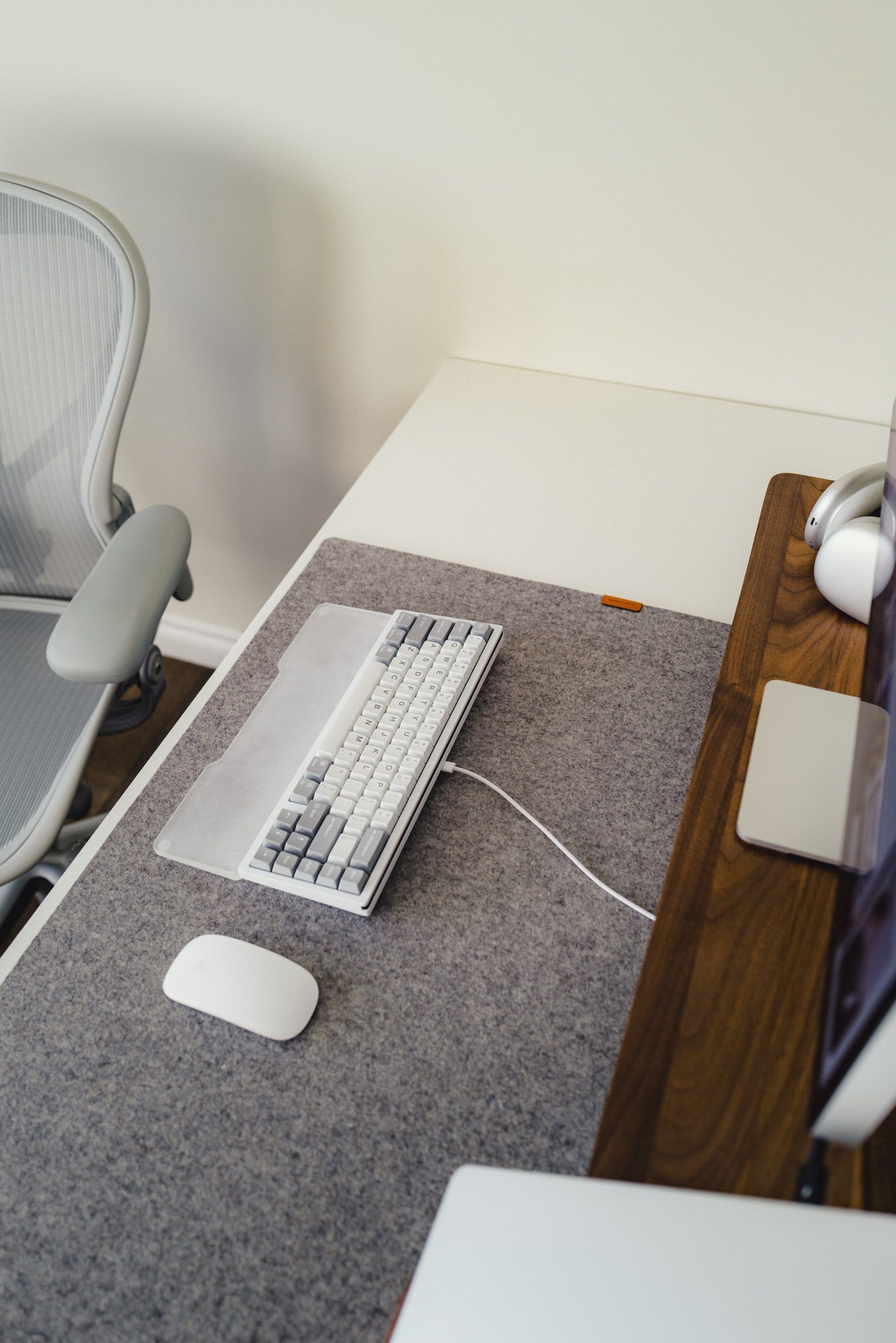
These switches have a bottom out force of 62g, which is slightly less than the popular Boba U4T Silent Tactiles. The Anthracites are slightly mushier than the Bobas as well. You can really feel the Boba switch push back on your fingertip on its way back after being pressed and you will never forget the huge tactile bump on the way down on a Boba keypress. The same isn’t so for these Anthracites — there is a slight bump down and even more timid return on the way back up. The Anthracites are quieter, though.
Give me a choice and I am picking the Boba switches. But the Anthracites are growing on me.
The Keycaps
Mode’s Anthracite keycaps are far more than just good looks. They provide a retro style that would fit any monotone or greyscale workspace. But more importantly, Mode has opted for a few specific features which set these keycaps apart from anything you’re picking up right now from Keychron or Nuphy:
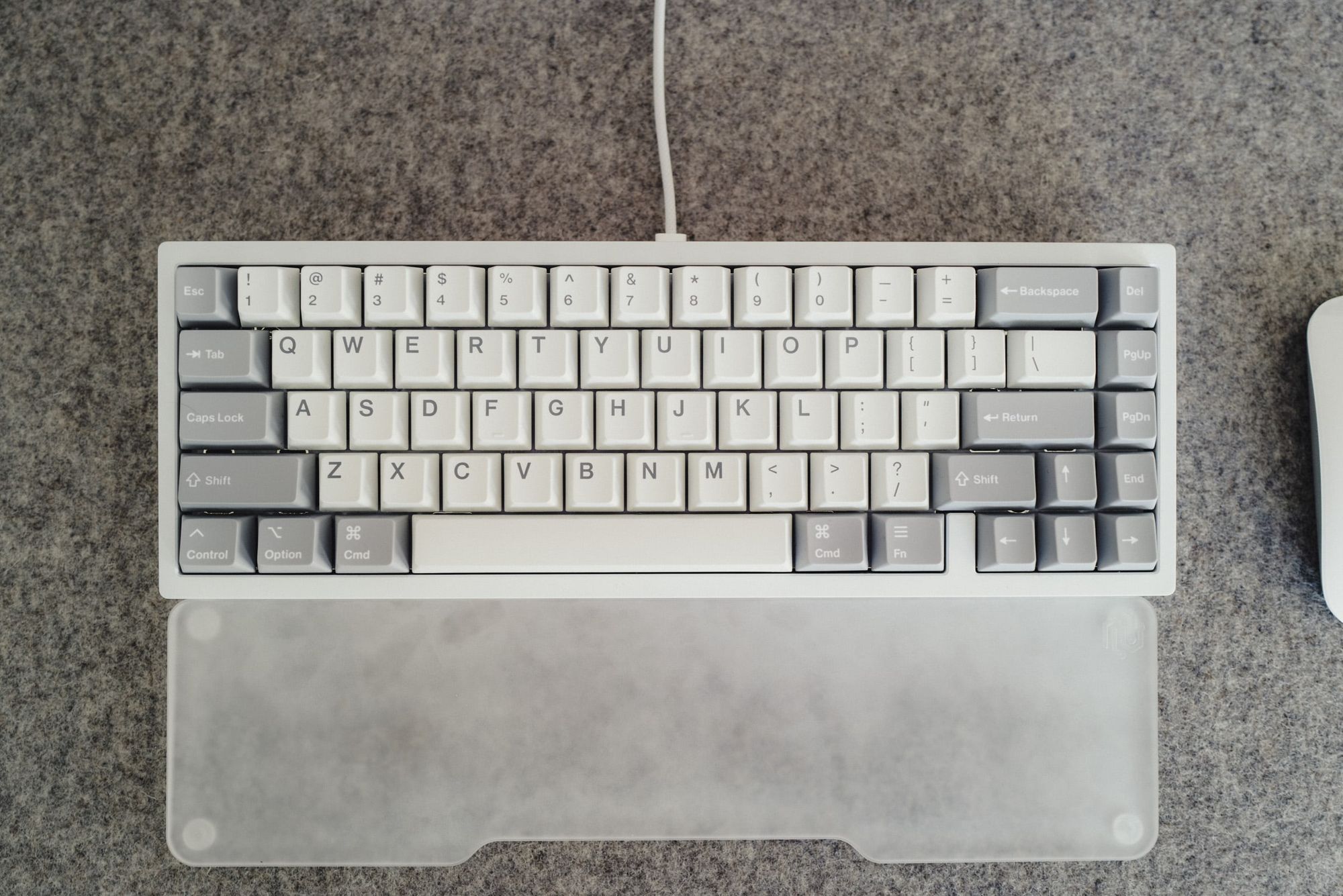
- PBT/ABS blend materials — These keycaps are optimized around scratch and shine resistance, ensuring your fingerprint oils don’t take their toll on your keyboard. The keycaps have a more tactile feel to them, especially if I compare to my Nuphy Halo96 stock keycaps. I love the feel of the Tai Hao keycaps on ZSA’s keyboard offerings, but they pick up finger grime instantly. Mode seems to have solved this problem.
- Huge double shot legends — Mode’s keycap legends are famously large. I love these large legends. The legends are standard font and easy to read. They’re massive and hard to miss. And the modifier keys come with the Apple-specific symbols baked right in. I love these keycaps.
- You receive a true entire set — In case you ever want to use these keycaps on a differently-sized or shaped keyboard, Mode sends the entire keycap set with the prebuilt Envoy. So if you want to use the extra keys on a different keyboard or opt for a different keyboard altogether, these keycaps will be available no matter your keyboard selection.
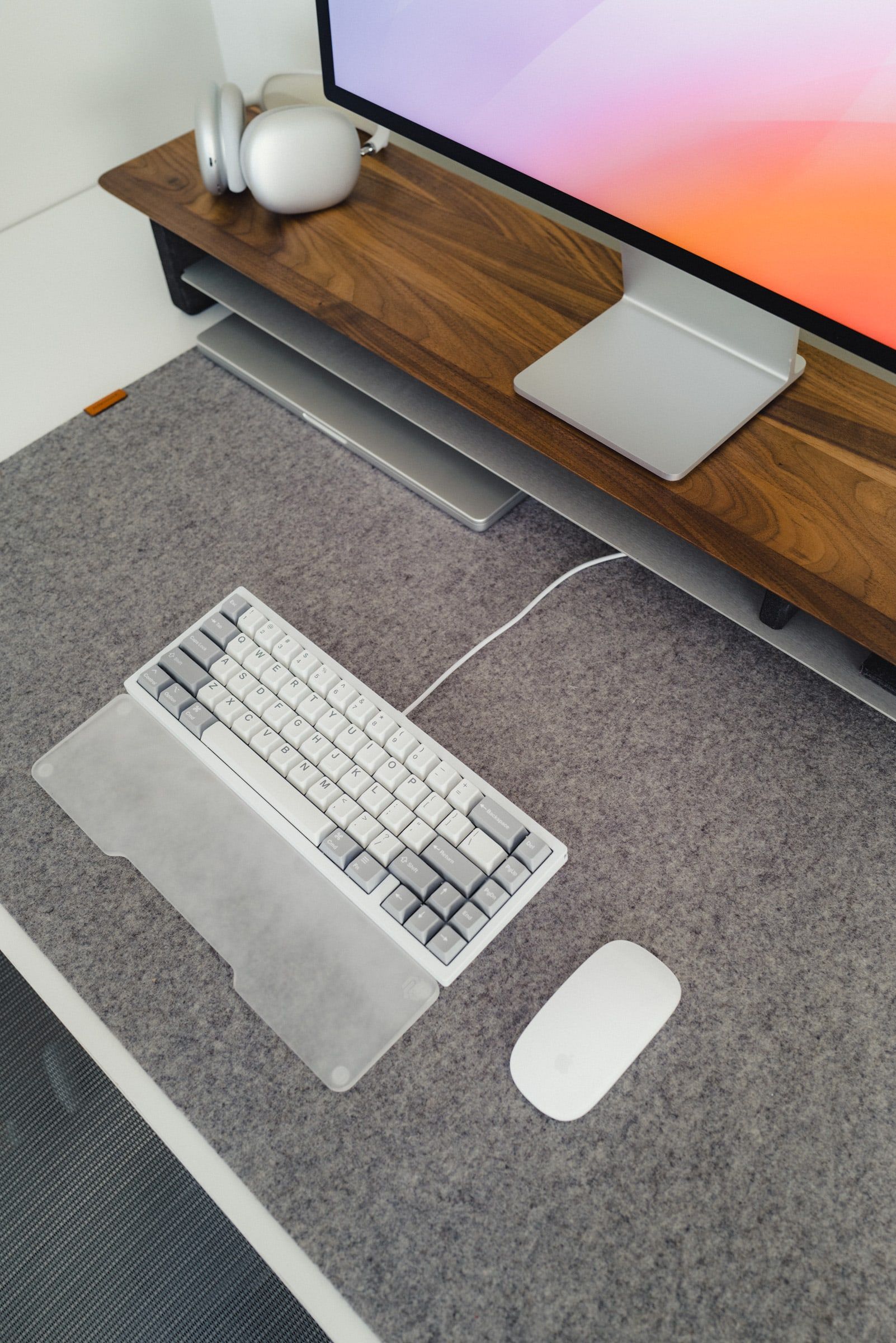
Visually speaking, these Anthracite keycaps are the star of the show. They really bring the Envoy’s design to the forefront. And while the design is likely why you come to the show, it’s the feel of the keycaps which will have you returning to Mode for your next set.
Wrap Up
All in, the prebuilt Mode Envoy was $385 USD — a staggering number once you convert to Canadian dollars and add customs, duties, taxes, and shipping. I wanted this keyboard. So I paid for it. You do you.
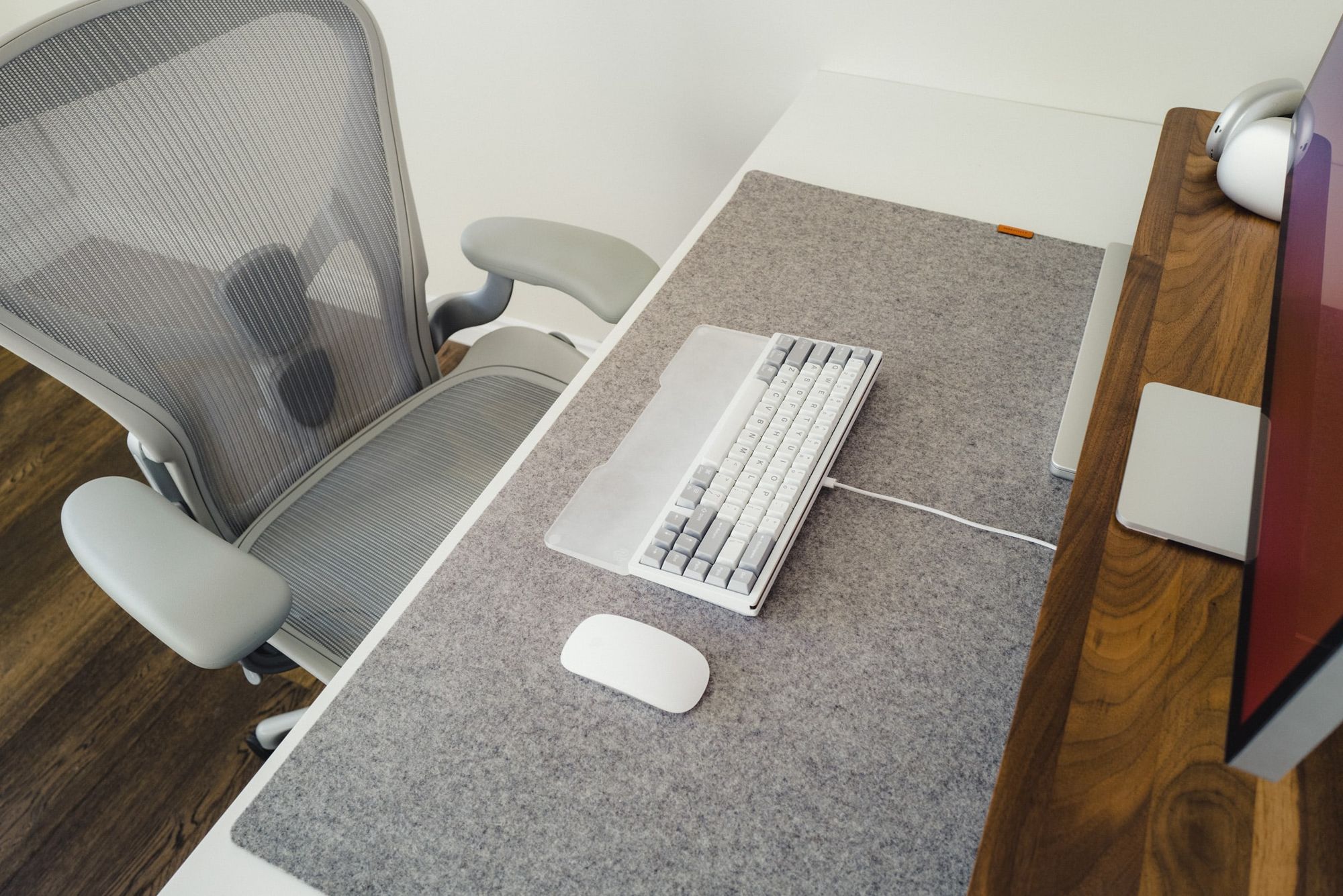
The reason I write about the keyboard is because I think I now understand why these keyboards can get so expensive. This sum of parts is far, far better than any previous sum of mechanical keyboard parts I’ve tried. The chassis is sturdier and truer. The switches are great for any environment. The keycaps are probably the nicest keycaps on the market right now. Subjective, I know.
This sum of parts feels as though my mechanical keyboard hobby has been finalized. The only keyboard I want now is the Sonnet.